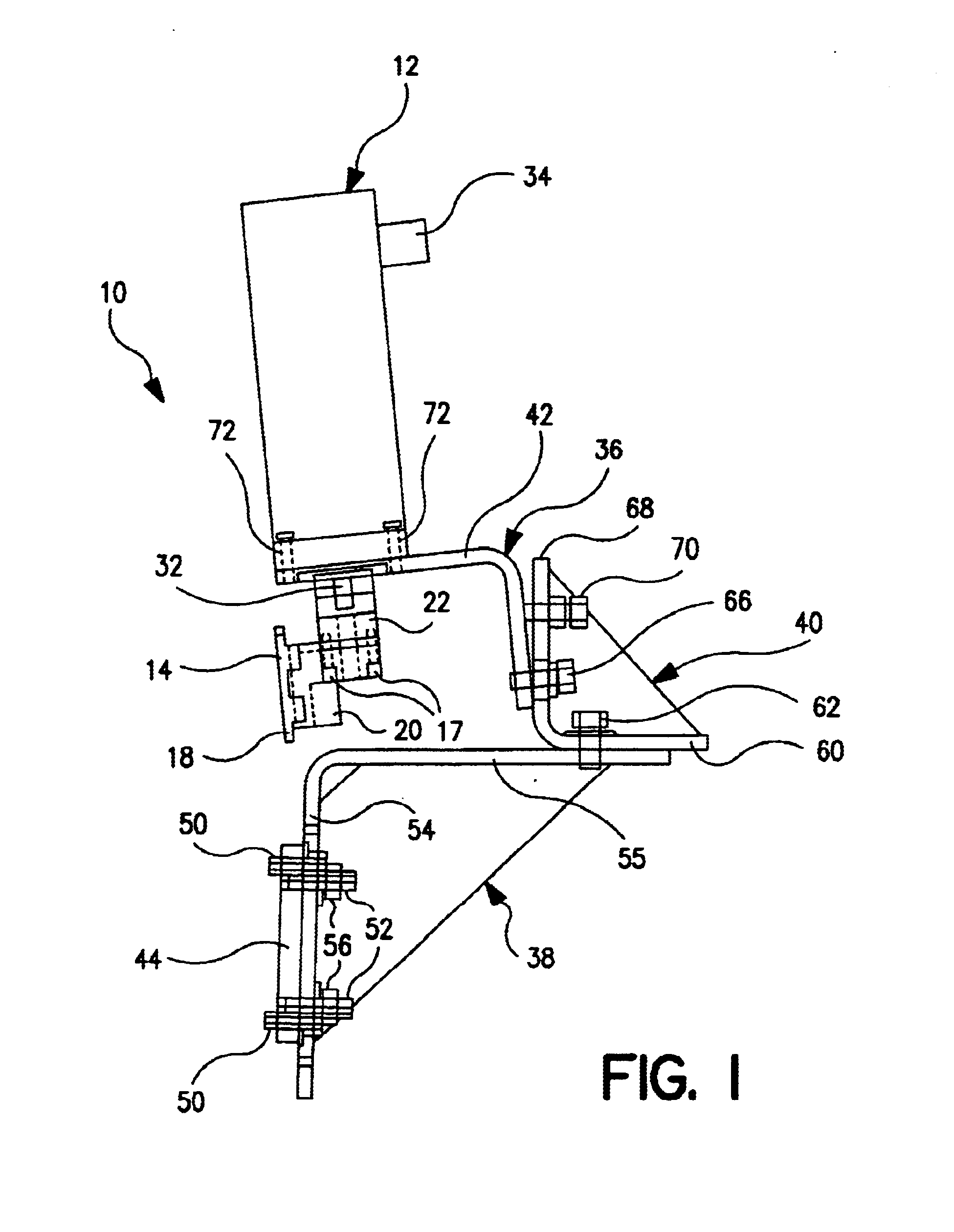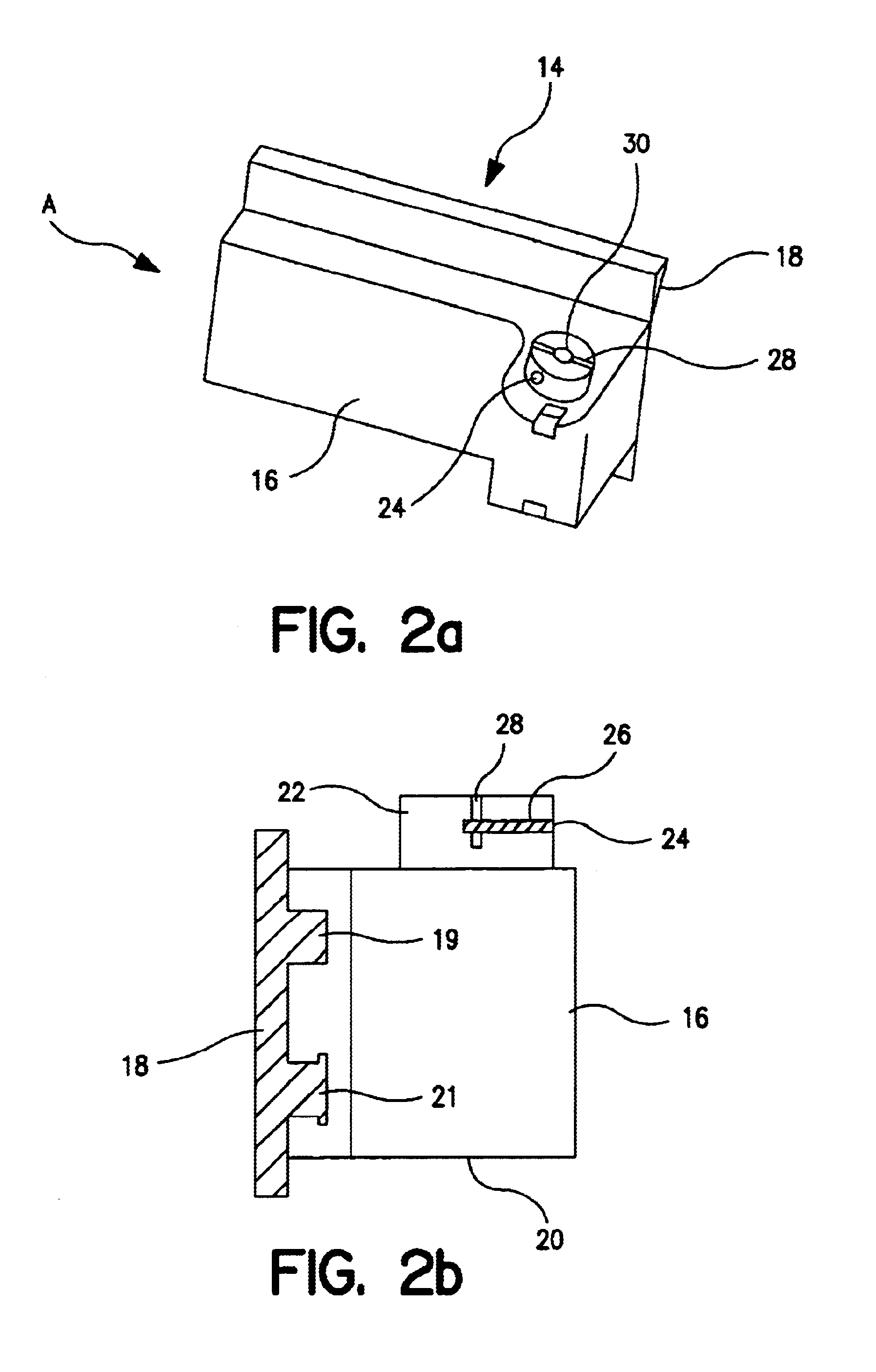Container diverter
a container and divider technology, applied in the field of containers, can solve the problems of bottle label misalignment or even total missing, bottle bottle label may not be properly aligned or positioned, and the bottle bottle may be commercially unacceptable. , to achieve the effect of smooth removal of the articl
- Summary
- Abstract
- Description
- Claims
- Application Information
AI Technical Summary
Benefits of technology
Problems solved by technology
Method used
Image
Examples
Embodiment Construction
In one embodiment, the present invention provides: a method for diverting articles selected for removal from a stream of articles travelling along a pathway on a conveyor, said method comprising the steps of: locating adjacent said pathway a deflector member adapted to rotate into said pathway to contact and controllably sweep selected articles from said stream of articles; following removal of each selected article from said stream, reversing the rotation of said deflector member thereby removing same out of said pathway to allow subsequent non-selected articles in said stream to continue along said pathway without being impeded by said deflector member; and said deflector member being rotated by a synchronous motor acting in response to a predetermined signal to cause the said rotations of said deflector member.
In another embodiment the present invention provides: a device for diverting an article selected for removal from a stream of articles travelling along a pathway on a conve...
PUM
 Login to View More
Login to View More Abstract
Description
Claims
Application Information
 Login to View More
Login to View More - R&D
- Intellectual Property
- Life Sciences
- Materials
- Tech Scout
- Unparalleled Data Quality
- Higher Quality Content
- 60% Fewer Hallucinations
Browse by: Latest US Patents, China's latest patents, Technical Efficacy Thesaurus, Application Domain, Technology Topic, Popular Technical Reports.
© 2025 PatSnap. All rights reserved.Legal|Privacy policy|Modern Slavery Act Transparency Statement|Sitemap|About US| Contact US: help@patsnap.com



